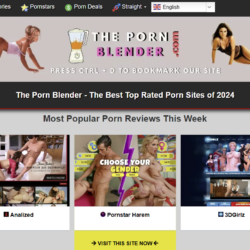
For a century, the formula was simple. A handful of studios had the cameras, the distribution, and all the power. Performers were employees, often interchangeable. Then the internet changed the rules. And then platforms like OnlyFans flipped the whole table over.
Cutting Out the Middleman: The Great Disintermediation
The single most disruptive part of the “OnlyFans Effect” is economic. It’s a concept called disintermediation. A fancy word for a simple, brutal idea: cutting out the middleman. In the old studio system, a performer might get paid a flat fee for a day’s work, say a few hundred or a couple of thousand dollars. The studio would then own that content forever, profiting from it for years across different platforms. The power imbalance was immense. Creator platforms smashed that model to pieces. Suddenly, a performer could create their own content and sell it directly to their audience. The platform takes a cut, of course-typically 20%-but that means the creator keeps 80%. This isn’t just a slightly better deal. It’s a fundamental restructuring of the industry’s finances. It shifted the lion’s share of the profit from the studio to the individual, turning performers from paid talent into business owners.
The Authenticity Revolution: Why ‘Real’ Trumps ‘Polished’
The economic shift was tied to an even bigger cultural one. The high-gloss, heavily produced aesthetic of studio porn began to look dated. Audiences started craving something else. Something that felt more personal. More real. The “OnlyFans aesthetic”-often shot on a smartphone, with natural lighting, showing real personalities-became the new standard. It’s about connection, not just consumption. Fans aren’t just buying a video; they are buying access to a person. They can chat, make requests, and build a parasocial relationship. This hunger for authenticity isn’t just about adult content; it’s a universal digital trend. Audiences are tired of slick, corporate products. They want a connection. It’s the same dynamic that drives live streaming and interactive gaming. To see how other entertainment sectors are building platforms around this direct user engagement, you can read more about the latest trends. The key is making the user feel seen and connected, not just like a passive consumer.
From Performer to CEO: The Rise of the Creator-Entrepreneur
This new model offers incredible freedom, but it comes at a price. Performers are no longer just performers. They have become one-person media companies. They are the CEO, the marketing department, the customer service team, and the accountant, all rolled into one. Think about the required skillset:
- Content Strategist: Deciding what to create, when to post, and how to price it.
- Marketer: Promoting themselves 24/7 on mainstream social media like Twitter and TikTok.
- Community Manager: Spending hours every day chatting with fans, building relationships, and managing expectations.
- Business Operator: Handling payments, taxes, and all the unglamorous backend work.
It’s an immense amount of work. The most successful creators aren’t necessarily the ones who produce the most explicit content, but the ones who are the best entrepreneurs. They understand branding, community, and the art of the hustle.
The Double-Edged Sword: The Grind and the Mental Load
While the narrative of empowerment is true for many, this new world has its own dark side. The direct-to-fan model creates immense pressure. There are no off days. The need to constantly create content and be available for fans can lead to severe burnout. Performers talk about the “content treadmill”-a never-ending cycle of shooting, editing, and promoting. Furthermore, the emotional labor is huge. Managing the expectations and sometimes obsessive demands of hundreds of paying fans takes a significant mental toll. In the old studio system, there was at least a physical separation between work and life. In the creator economy, your life is your work, and the boundaries can easily dissolve, leading to isolation and exhaustion. There’s no HR department to turn to when you’re running your own business.
How Studios Are Fighting Back (or Joining In)
So, is the traditional studio dead? Not exactly. But it has been forced to adapt. The smart ones are not trying to fight the trend; they’re trying to join it. Some have started their own “creator-led” platforms, trying to replicate the OnlyFans model under their own brand. Others are now scouting for talent on OnlyFans, offering popular independent creators hybrid deals that might include a traditional studio shoot combined with support for their personal brand. Many have also changed their content style, moving away from the old, polished look to a more “authentic,” “behind-the-scenes” feel that mimics what audiences have grown to prefer. They can no longer dictate the terms. They have to compete in a world where the individual performer now holds a huge amount of power, and they are scrambling to find their new place in this creator-first landscape.
Conclusion
The “OnlyFans Effect” is more than just a new platform; it’s a permanent and irreversible shift in the power dynamics of the adult entertainment industry. It’s a story we’ve seen before in music, in publishing, and in media. Technology empowers individuals, middlemen get squeezed, and the old guard is forced to either adapt or become irrelevant. It has created a new class of creator-entrepreneurs with unprecedented financial and creative control. But it has also created a new set of pressures and challenges. The reckoning isn’t over. But one thing is clear: the days when a few studios held all the keys to the kingdom are gone for good. The power now sits with the creators.





